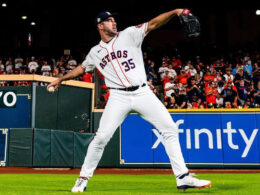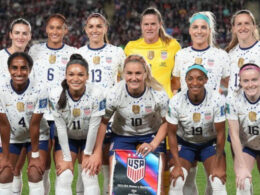By Ryan Bologna
With the new MLB collective bargaining agreement, we will likely see restrictions to the shift in the 2023 season. Here are three players who will benefit from this rule change.
For each of these players, we will take a look at how much they face the shift, then we will compare their batting average (BA) to their expected batting average (xBA) from Statcast. Players who face a large number of shifts and have a significantly higher expected batting average than actual batting average are candidates for a jump in productivity in 2023.
This is not an exact science, and there are players who are shifted at a high rate that have an expected batting average that is very close to their actual batting average. Those players still could see an improvement in their numbers because the shift changes their approach at the plate, and if the shift was not working against them teams would not be implementing them against those players.
An example is Yankees outfielder Joey Gallo. He had a .199 batting average and a .202 expected batting average, but is still shifted against the fifth most in baseball at 95% of the time. He should still see significant improvement with shift restrictions in 2023.
Carlos Santana – Kansas City Royals
Shift Percentage: 97.6%
BA: .214
xBA: .244
Differential: -.030
Santana is certainly on the older side at 35 years old. But he sees shifts implemented against him more than any player in MLB. He also has the ninth biggest disparity between batting average and expected batting average.
All signs point to Santana being helped significantly by the shift being banned in 2023. After a couple of down years in 2020 and 2021, this is a welcomed change for Santana and could be a change that extends his career.
José Ramírez – Cleveland Guardians
Shift Percentage: 96.4%
BA: .266
xBA: .281
Differential: -.015
Ramírez is already a top 20 player in baseball at his very worst, but as a switch hitter he could still see some improvement from the left side of the plate with shift restrictions. Given that most pitchers are righties, Ramírez bats from the left side about 65% of the time. The shift percentage shown above is the rate he is shifted when batting lefty, and that is the second-highest shift rate in baseball behind Santana.
The differential between batting average and expected batting average is not the biggest you will see, but it is still significant. For a player as good as Ramírez already is, it is scary for the league to know he might have a higher ceiling with shift restrictions in 2023.
Max Kepler – Minnesota Twins
Shift Percentage: 91.4%
BA: .211
xBA: .255
Differential: -.044
Kepler had a down year in 2021 after having two solid seasons in 2019 and 2020. He is the ninth most shifted player in baseball, and his expected batting average being .044 above his actual batting average is the second-highest in baseball. The highest disparity is Matt Carpenter, but he had about 250 fewer plate appearances than Kepler.
There has been speculation that Kepler was a beneficiary of the juiced ball in 2019 and 2020, and that might be true. But looking at the data shows that it might not be that simple in his case. He is someone to watch out for in 2023 with shift restrictions in place.
Picture Credit: Erik Drost








